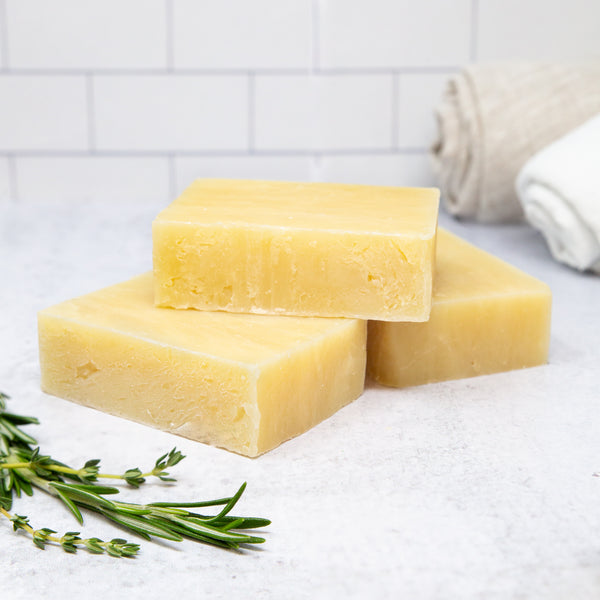
Soap bar for contact sports athletes
As an integral part of our Take Down line, this soap bar was created for lovers of contact sports.
Featuring Essential Oils of Thyme, Cinnamon, and Oregano, this soap bar is more than ready to get rid of that post-workout gunk.
Note: this product is not certified organic
Product Weight: 4 oz.
Contains a FULL 2% of essential oils.
Essential oils have been used for thousands of years. Here are some peer-reviewed clinical studies involving the effects of the specific essential oils used in this formulation.
Schmidt (1936), who tested the antifungal abilities of thyme, fennel, clove and cinnamon
Antibacterial & Antifungal properties of essential oils: Current Medicinal Chemistry, volume 10. May 2003. http://www.ingentaconnect.com/content/ben/cmc/2003/00000010/00000010/art00002
Chemical Compositions and Antibacterial Effects of Essential Oils: http://pubs.acs.org/doi/abs/10.1021/jf049033e
Antibacterial activity of thyme & cinnamon : http://www.sciencedirect.com/science/article/pii/S0956713506002866
Antifungal effects of essential oils: Journal of applied microbiology: http://onlinelibrary.wiley.com/doi/10.1111/j.1365-2672.2007.03310.x/full
Oregano & cinnamon essential oils induce surface alteration: http://onlinelibrary.wiley.com/doi/10.1002/ptr.1528/abstractInfluenza-like illness in residential care homes: A study of the incidence, aetiological agents, natural history, and health resource utilization -- Hui et al., 10.1136/thx.2007.090951 -- Thorax.
Creech II, Clarence Buddy, et al. Community-Associated Methicillin-Resistance Staphylococcus aureus: The Way to the Wound Is through the Nose: Editorial Commentary. The Journal of Infectious Diseases, 2006;193:169-171.
Kuehnert, Matthew J; Kruszon-Moran, Deanna; Hill, Holly, et al. Prevalence of Staphylococcus aureus Nasal Colonization in the United States, 2001-2002. The Journal of Infectious Diseases, 2006; 193:172-179.
National Institute of Allergy and Infectious Diseases. Emerging staph strains found to be increasingly deadly and deceptive. September 7, 2005. http://www.nih.gov/news/pr/sep2005/niaid-07.htm
Kuehnert MJ et al. Methicillin-resistant-Staphylococcus aureus hospitalizations, United States. Emerging Infectious Diseases. June 2005. http://www.cdc.gov/ncidod/EID/vol11no06/04-0831.htm
Center for Disease Control and Prevention. CA-MRSA information for the public. February 2005. http://www.cdc.gov/ncidod/hip/Aresist/ca_mrsa_public.htm
Minnesota Department of Health. Causes and symptoms of MRSA. October 2004. http://www.health.state.mn.us/divs/idepc/diseases/mrsa/basics.html
Miller LG et al. Necrotizing fasciitis caused by community-acquired methicillin resistant Staphylococcus aureus in Los Angeles. April 7, 2005. New England Journal of Medicine. 352(14): 1445-1453.
Arnold FW, et al. An analysis of a community-acquired pathogen in a Kentucky community: Methicillin-resistant Staphylococcus aureus. The Journal of the Kentucky Medical Association. 2005 May;103(5):206-10.
Johnson LB, et al. Community-acquired MRSA: current epidemiology and management issues. Infections in Medicine. 2005;22(1):16-20.
Centers for Disease Control and Prevention. Methicillin-Resistant Staphylococcus Aureus Infections Among Competitive Sports Participants – Colorado, Indiana, Pennsylvania, and Los Angeles County, 2000-2003. MMWR Weekly, August 22, 2003 / 52(33);793-795.
Bartlett JG. Update on Community-Acquired MRSA. 44th Interscience Conference on Antimicrobial Agents and Chemotherapy.
Alliance for the Prudent Use of Antibiotics. Update on Antibiotic-Resistant Staph Aureus. http://www.tufts.edu/med/apua/mrsa/mrsa.html
Mayo Clinic. Cellulitis. http://www.mayoclinic.com/health/cellulitis/DS00450
The National Women's Health Information Center. Staph Infections Turning Up Outside Hospitals. April 6, 2005.
Dietrich DW, et al. Community-acquired methicillin-resistant Staphylococcus aureus in southern New England children. Pediatrics. 2004 Apr;113(4):e347-52.
Arnold FW, et al. An analysis of a community-acquired pathogen in a Kentucky community: methicillin-resistant Staphylococcus aureus. The Journal of the Kentucky Medical Association. 2005 May;103(5):206-10.
Mugnaini L, Nardoni S, Pistelli L, Leonardi M, Giuliotti L, Benvenuti MN, Pisseri F, Mancianti F. A herbal antifungal formulation of Thymus serpillum, Origanum vulgare and Rosmarinus officinalis for treating ovine dermatophytosis due to Trichophyton mentagrophytes. Mycoses. 2013 May;56(3):333-7.
Mugnaini L, Nardoni S, Pinto L, Pistelli L, Leonardi M, Pisseri F, Mancianti F. In vitro and in vivo antifungal activity of some essential oils against feline isolates of Microsporum canis. J Mycol Med. 2012 Jun;22(2):179-84.
de Sousa LL, de Andrade SC, Athayde AJ, de Oliveira CE, de Sales CV, Madruga MS, de Souza EL. Efficacy of Origanum vulgare L. and Rosmarinus officinalis L. essential oils in combination to control postharvest pathogenic Aspergilli and autochthonous mycoflora in Vitis labrusca L. (table grapes). Int J Food Microbiol. 2013 Jun 10;165(3):312-318.
Jamali CA, El Bouzidi L, Bekkouche K, Lahcen H, Markouk M, Wohlmuth H, Leach D, Abbad A. Chemical composition and antioxidant and anticandidal activities of essential oils from different wild Moroccan Thymus species. Chem Biodivers. 2012 Jun;9(6):1188-97.
Khan A, Bashir S, Khan SR, Gilani AH. Antiurolithic activity of Origanum vulgare is mediated through multiple pathways. BMC Complement Altern Med. 2011 Oct 17;11:96.
Portillo-Ruiz MC, Sánchez RA, Ramos SV, Muñoz JV, Nevárez-Moorillón GV. Antifungal effect of Mexican oregano (Lippia berlandieri Schauer) essential oil on a wheat flour-based medium. J Food Sci. 2012 Aug;77(8):M441-5.
Kloucek P, Smid J, Flesar J, Havlik J, Titera D, Rada V, Drabek O, Kokoska L. In vitro inhibitory activity of essential oil vapors against Ascosphaera apis. Nat Prod Commun. 2012 Feb;7(2):253-6.
Avila-Sosa R, Palou E, Jiménez Munguía MT, Nevárez-Moorillón GV, Navarro Cruz AR, López-Malo A. Antifungal activity by vapor contact of essential oils added to amaranth, chitosan, or starch edible films. Int J Food Microbiol. 2012 Feb 1;153(1-2):66-72.
Gómez-Sánchez A, Palou E, López-Malo A. Antifungal activity evaluation of Mexican oregano (Lippia berlandieri Schauer) essential oil on the growth of Aspergillus flavus by gaseous contact. J Food Prot. 2011 Dec;74(12):2192-8.
Verma RS, Padalia RC, Chauhan A. Volatile constituents of Origanum vulgare L., 'thymol' chemotype: variability in North India during plant ontogeny. Nat Prod Res. 2012;26(14):1358-62.
Missopolinou D, Tsioptsias C, Lambrou C, Panayiotou C. Selective extraction of oxygenated compounds from oregano with sub-critical water. J Sci Food Agric. 2012 Mar 15;92(4):814-20.
Bisht D, Pal A, Chanotiya CS, Mishra D, Pandey KN. Terpenoid composition and antifungal activity of three commercially important essential oils against Aspergillus flavus and Aspergillus niger. Nat Prod Res. 2011 Dec;25(20):1993-8.
Lazar-Baker EE, Hetherington SD, Ku VV, Newman SM. Evaluation of commercial essential oil samples on the growth of postharvest pathogen Monilinia fructicola (G. Winter) Honey. Lett Appl Microbiol. 2011 Jan 19.
*This product has NOT been certified to the organic standards.
Saponified Organic Oils of Sunflower, Coconut, Olive & Palm, organic essential oils of lavender (Lavandula Angustifolia), tea tree (Melaleuca Alternifolia), eucalyptus (Eucalyptus Globulus), oregano (Oreganum Vulgare), thyme (Thymus Vulgaris) & cinnamon bark (Cinnamomum Zeylanicum), rosemary extract.
Use immediately after working out. May be used all over body. For best results, use a loofa.
Enter your email below to get your exclusive discount code! First-time customer only.
Please note, It may take 5-10 minutes for your confirmation email to be received.
Copyright © 2024 Poofy Organics. All rights reserved. | Powered by Integratz
Your list is ready to share
Share Cart
